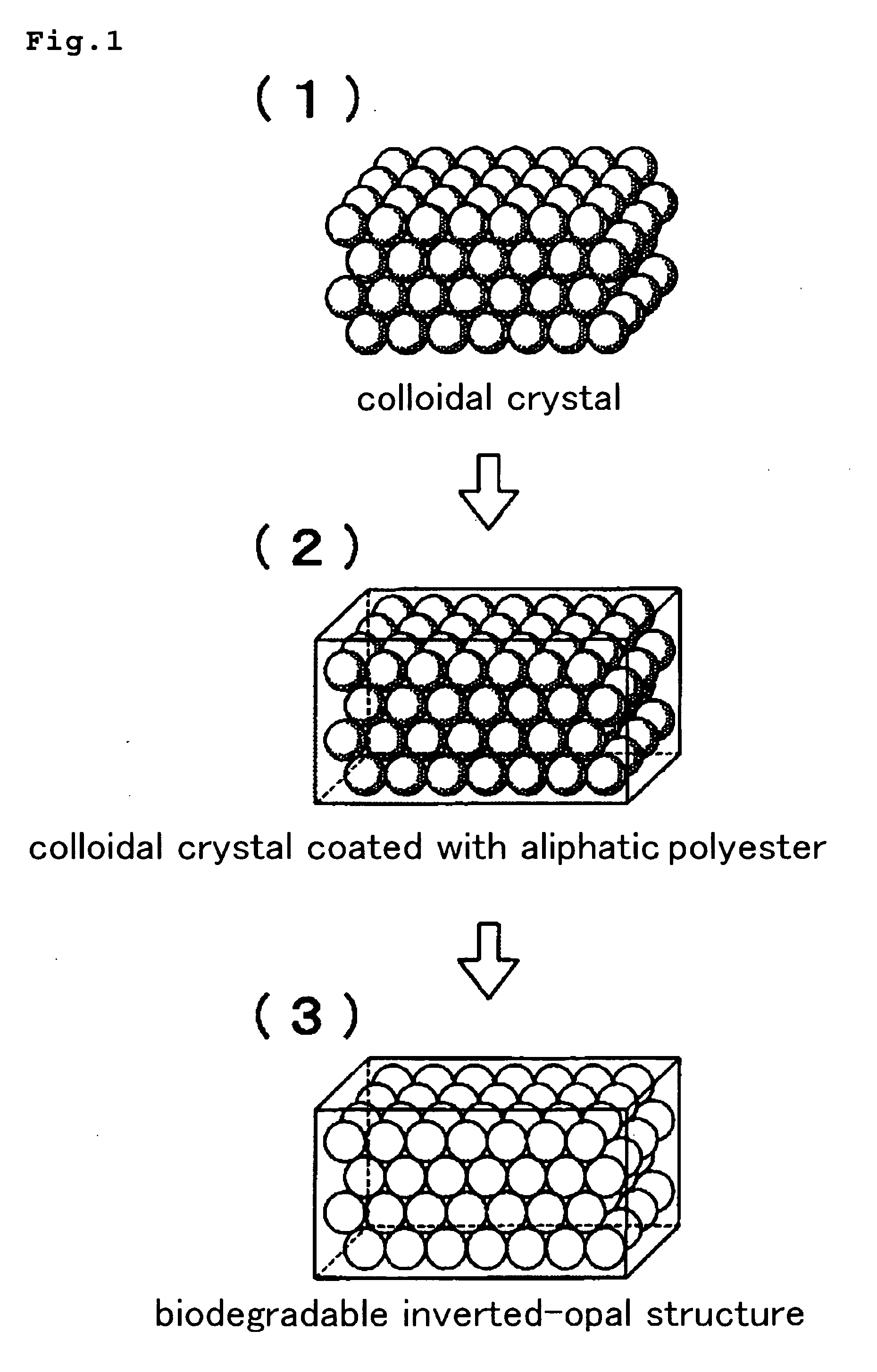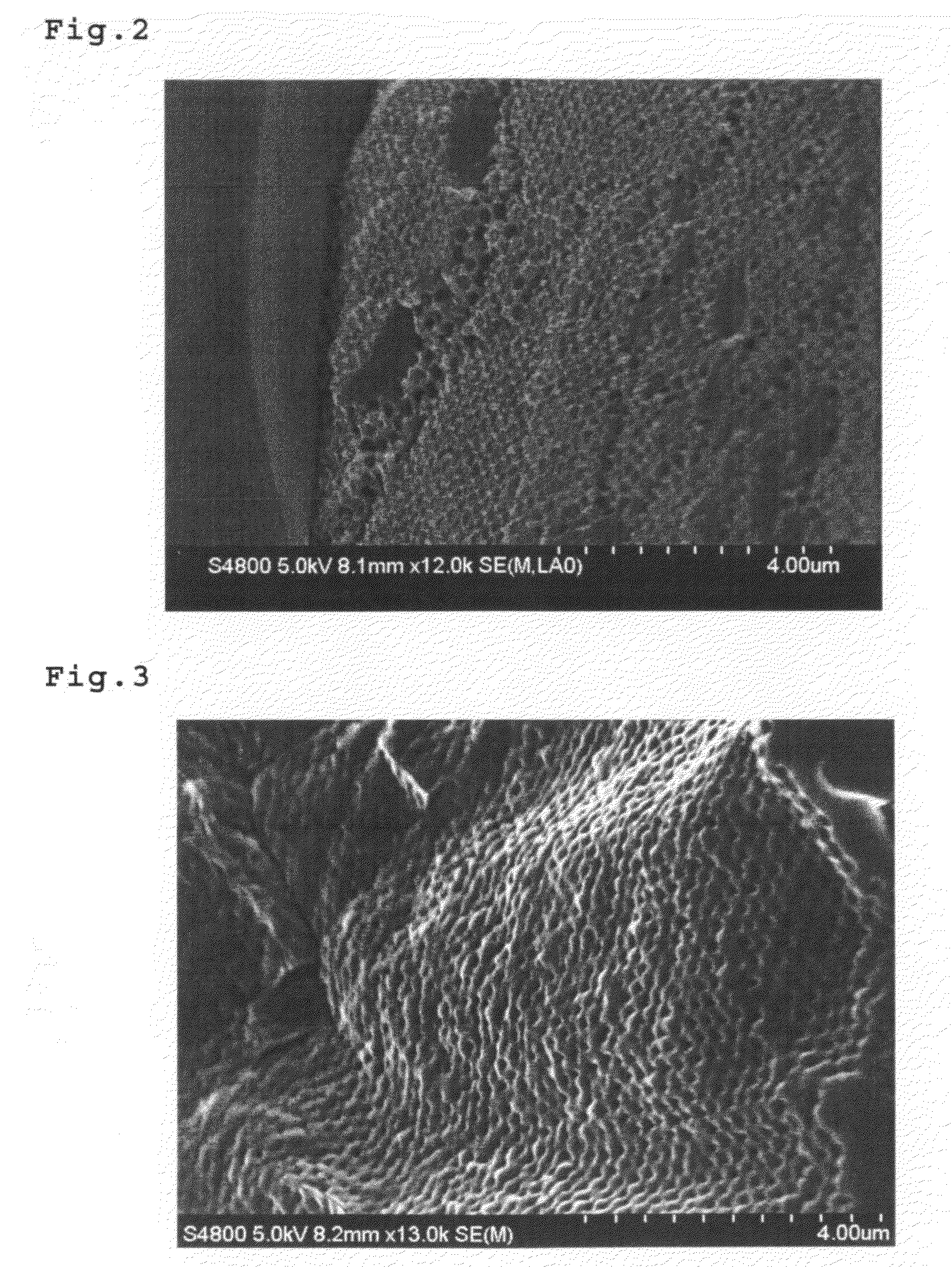Biodegradable Inverted-Opal Structure, Method for Manufacturing and Using the Same, and Medical Implant Comprising the Biodegradable Inverted-Opal Structure
a biodegradable, inverted-opal technology, applied in the direction of prosthesis, packaging foodstuffs, packaging goods, etc., can solve the problems of difficult adjustment of conditions, inability to apply substrate to low fluidity polymer or polymer gel, and insufficient biodegradability of gel as biomedical tissue medical implant, etc., to achieve excellent ph responsiveness, biocompatibility and ph responsiveness, and simple and easy
- Summary
- Abstract
- Description
- Claims
- Application Information
AI Technical Summary
Benefits of technology
Problems solved by technology
Method used
Image
Examples
examples
[0104]The present invention is explained by presenting examples below in order to make the effect clear, but the invention is not limited to the following examples.
(The Synthesis of the Biodegradable Inverted-Opal Structure: 1)
[0105]A suspension including silica particles having average diameter of 300 nm (Polysciences, Inc.) was delivered by drops on a glass substrate by using a pasteur pipette. After placing in a darkroom at normal temperature and humidity, a colloidal crystal thin-film was obtained.
[0106]As a material of the biodegradable inverted-opal structure, citric acid (L.D.50 (oral mouse)=5,040 mg / kg) (made by Wako Pure Chemical Industries, Ltd.), pentaerythritol (25,500 mg / kg), 1,5-pentanediol (25,500 mg / kg), which are known as its low toxicity, were used. Pentaerythritol 0.0681 g (0.5 mmol), 1,5-pentanediol 0.52 g (5 mmol) and citric acid 1.153 g (6 mmol) were dissolved in ion-exchange water and fully dissolved at room temperature. The obtained mixed solution was deliver...
PUM
| Property | Measurement | Unit |
|---|---|---|
| wavelength | aaaaa | aaaaa |
| diameter | aaaaa | aaaaa |
| weight fraction | aaaaa | aaaaa |
Abstract
Description
Claims
Application Information
 Login to View More
Login to View More - R&D
- Intellectual Property
- Life Sciences
- Materials
- Tech Scout
- Unparalleled Data Quality
- Higher Quality Content
- 60% Fewer Hallucinations
Browse by: Latest US Patents, China's latest patents, Technical Efficacy Thesaurus, Application Domain, Technology Topic, Popular Technical Reports.
© 2025 PatSnap. All rights reserved.Legal|Privacy policy|Modern Slavery Act Transparency Statement|Sitemap|About US| Contact US: help@patsnap.com



